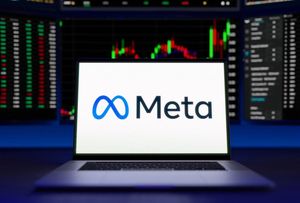
New York, NY – October 20, 2025 – J.P. Morgan Asset Management has today unveiled its highly anticipated 2026 Long-Term Capital Market Assumptions (LTCMAs), the 30th annual edition, offering a critical 10-15 year outlook for investors navigating an increasingly complex global financial environment. Released on October 20, 2025, this landmark report signals a pivotal shift from a prolonged era of low growth and low interest rates to a healthier, albeit more volatile, global economy. The key takeaway for investors is a call for strategic adaptation: while the venerable 60/40 portfolio demonstrates surprising resilience, a proactive approach to diversification, particularly into alternative assets, is essential to thrive amidst the dual forces of escalating economic nationalism and transformative artificial intelligence advancements.
The LTCMAs provide a comprehensive roadmap for asset allocation, projecting an attractive 6.4% annual return for the traditional USD 60/40 stock-bond portfolio. However, the report strongly advocates for a "60/40+" strategy, incorporating diversified alternatives, to significantly enhance risk-adjusted returns. This forward-looking analysis underscores the necessity for investors to re-evaluate conventional wisdom and embrace a broader toolkit to build resilient portfolios capable of capturing opportunities and mitigating risks in this evolving economic paradigm.
A New Era of Investment: J.P. Morgan's 2026 LTCMAs Detail a Shifting Horizon
J.P. Morgan Asset Management's 2026 Long-Term Capital Market Assumptions, released today, October 20, 2025, paint a detailed picture of the investment landscape for the next decade and beyond. The report, a cornerstone for institutional and individual investors alike, highlights a global economy characterized by moderate growth, normalized interest rates, and robust capital investment. Central to its findings is the surprising resilience of the traditional USD 60/40 portfolio, which is projected to deliver an attractive 6.4% annual return over the next 10-15 years, defying some earlier predictions of its demise. This forecast suggests that the foundational strategy, often considered a benchmark, continues to hold its ground in a new market reality.
However, the LTCMAs strongly emphasize that merely sticking to the 60/40 model may not be sufficient for optimal outcomes. J.P. Morgan (NYSE: JPM) introduces the concept of a "60/40+" portfolio, which strategically allocates an additional 30% to diversified alternatives. This enhanced approach, encompassing global real estate, global real assets, private credit, hedge funds, and private equity, is projected to achieve higher annual returns of 6.9% and a significant 25% improvement in its Sharpe ratio. The report specifically projects robust returns for alternative assets, including private equity at 10.2%, U.S. core real estate at 8.2%, and global core infrastructure at 6.5%, underscoring their critical role in boosting diversification and enhancing returns.
The report identifies two overarching macro trends shaping this new era: the persistent rise of economic nationalism and the accelerating adoption of artificial intelligence. Economic nationalism, characterized by trade frictions and shifting geopolitical policies, is expected to introduce increased inflation volatility but also spur domestic investment in certain regions. This necessitates portfolios built for resilience against a less stable correlation environment. Concurrently, AI advancements are anticipated to be a transformative force, providing a near-term boost to corporate profits and a longer-term enhancement to productivity, contributing an estimated 20 basis points annually to developed economies' growth. These twin forces demand a sophisticated investment strategy that goes beyond traditional asset allocations.
Key players involved in the creation and dissemination of these influential assumptions include the extensive research teams and strategists at J.P. Morgan Asset Management. Their rigorous quantitative and qualitative analysis forms the basis of these projections, guiding countless investment decisions globally. While immediate market reactions to such long-term assumptions are typically measured, the report's insights will undoubtedly inform strategic asset allocation discussions among institutional investors, pension funds, and wealth managers in the coming weeks and months, influencing capital flows towards the favored asset classes and strategies.
Navigating the Shifting Sands: Potential Winners and Losers in the New Investment Paradigm
J.P. Morgan's 2026 LTCMAs illuminate a path where certain sectors and companies are poised to thrive, while others may face significant headwinds. The emphasis on AI advancement and economic nationalism creates distinct opportunities and challenges across the corporate landscape.
Potential Winners:
- Technology Giants and AI Innovators: Companies at the forefront of AI development and adoption stand to benefit immensely. Firms like Nvidia (NASDAQ: NVDA), Google (NASDAQ: GOOGL), Microsoft (NASDAQ: MSFT), and Amazon (NASDAQ: AMZN) are already driving significant deal flow and are expected to see continued boosts to corporate profits and productivity. Their investments in AI infrastructure, research, and application will likely yield substantial returns, making them attractive long-term holdings.
- Alternative Asset Managers: With the strong recommendation for a "60/40+" portfolio, asset managers specializing in private equity, private credit, real estate, and infrastructure are set for increased capital inflows. Firms such as Blackstone (NYSE: BX), KKR (NYSE: KKR), and Apollo Global Management (NYSE: APO) are well-positioned to capitalize on this trend, as investors seek enhanced diversification and higher risk-adjusted returns outside traditional public markets.
- Domestic Infrastructure and Manufacturing: Economic nationalism, while creating trade frictions, also compels countries to boost domestic investment. This could benefit companies involved in infrastructure development, domestic manufacturing, and supply chain reshoring within major economies. Construction companies, industrial manufacturers, and logistics firms focused on national supply chains could see increased demand.
- Real Asset Companies: The report's positive outlook on real assets like real estate and infrastructure suggests a favorable environment for companies owning or managing these assets. Real estate investment trusts (REITs) and companies with significant infrastructure portfolios could see appreciation and stable income streams.
Potential Losers:
- Companies Highly Dependent on Globalized Supply Chains: Firms heavily reliant on complex, international supply chains may face increased costs and operational disruptions due to trade frictions and protectionist policies stemming from economic nationalism. Industries such as certain consumer electronics, automotive, and apparel could experience pressure on margins and profitability.
- Traditional Asset Managers (Slow to Adapt): While the 60/40 portfolio remains resilient, asset managers that fail to adapt to the growing demand for alternative assets and sophisticated diversification strategies may lag behind. Those with a rigid focus solely on traditional equity and fixed income products, without expanding their offerings, could see outflows or reduced competitiveness.
- Sectors Vulnerable to AI Disruption: While AI creates new opportunities, it also poses a threat to sectors and companies that are slow to adopt or are fundamentally disrupted by automation and intelligent systems. Certain segments of the service industry, routine manufacturing, and administrative functions could see job displacement and reduced demand for traditional services, impacting companies within those spheres.
The strategic pivots highlighted in the LTCMAs suggest that companies with agile business models, strong innovation capabilities, and a focus on resilience against geopolitical shifts will be the ultimate beneficiaries in this evolving investment landscape.
The Broader Tapestry: Wider Significance and Industry Implications
J.P. Morgan's 2026 Long-Term Capital Market Assumptions are not merely a set of projections; they represent a significant commentary on the evolving macroeconomic and geopolitical landscape, with profound implications for the financial industry and beyond. The report's insights fit into several broader industry trends, signaling a departure from the investment orthodoxies of the past decade.
Firstly, the emphasis on a "healthier global economy" with normalized interest rates marks a clear break from the "lower for longer" narrative that dominated financial markets post-2008. This shift implies a return to more traditional valuation metrics and a greater focus on fundamental economic performance rather than liquidity-driven asset price inflation. For bond markets, higher starting yields for core bonds, as noted in the report, suggest a more attractive income component, potentially drawing capital back to fixed income after years of challenging returns. This could ripple through the entire financial ecosystem, affecting everything from corporate borrowing costs to pension fund liabilities.
Secondly, the pervasive influence of economic nationalism is a trend that transcends financial markets, impacting global trade, international relations, and corporate strategy. The report's acknowledgment of increased inflation volatility due to trade frictions aligns with growing concerns about supply chain resilience and geopolitical risk. This trend could accelerate the regionalization of supply chains, benefiting domestic industries in major economic blocs while potentially fragmenting global markets. Competitors and partners across various industries, particularly those with global footprints, will need to re-evaluate their operational strategies, supply chain dependencies, and market access. Regulatory bodies may also introduce new policies aimed at protecting domestic industries or ensuring national security, adding another layer of complexity for multinational corporations.
Thirdly, the transformative power of Artificial Intelligence is perhaps the most significant long-term trend highlighted. The projected 20 basis point annual boost to developed economies' growth underscores AI's potential to fundamentally reshape productivity and corporate profitability. This aligns with a broader industry trend of technological disruption, where innovation drives competitive advantage and creates new market leaders. The ripple effects will be felt across all sectors, from healthcare and finance to manufacturing and retail, as companies either embrace AI to enhance efficiency and create new products or risk being left behind. This could lead to a widening gap between tech-forward companies and those slow to adapt, influencing sector rotations and investment flows.
Historically, periods of significant technological advancement and geopolitical shifts have often been accompanied by shifts in optimal asset allocation. The LTCMAs' call for enhanced diversification, particularly into alternatives, echoes similar advice given during past eras of market uncertainty or structural change. For instance, the rise of emerging markets in the late 20th century or the dot-com boom and bust highlighted the importance of dynamic portfolio management. The current environment, with its unique blend of AI-driven productivity and nationalistic economic policies, presents a new permutation of these challenges, demanding a sophisticated and flexible investment approach.
Charting the Course Ahead: What Comes Next for Investors
The release of J.P. Morgan's 2026 Long-Term Capital Market Assumptions marks a critical juncture for investors, prompting a re-evaluation of strategies for both the short and long term. The insights provided offer a glimpse into potential market opportunities and challenges that will shape investment decisions in the coming months and years.
In the short term, investors are likely to scrutinize their existing portfolios against the backdrop of the LTCMAs' projections. We can expect an immediate uptick in discussions around increasing allocations to alternative assets, particularly private equity, real estate, and private credit, as asset managers and institutional investors seek to capture the projected higher returns and diversification benefits. This could lead to a sustained flow of capital into these less liquid markets, potentially driving up valuations in certain segments. Additionally, the renewed confidence in the 60/40 portfolio, albeit with a call for enhancement, might reassure some investors who had questioned its efficacy in recent years.
Looking further ahead, the long-term implications are profound. The ongoing trends of economic nationalism and AI advancement will necessitate continuous strategic pivots. Companies will need to adapt their business models to navigate complex trade policies and leverage AI for competitive advantage. For investors, this means a greater emphasis on active management and thematic investing, focusing on companies and sectors that are either direct beneficiaries of AI adoption or are strategically positioned to thrive in a more fragmented global economy. This could also lead to a more nuanced approach to geographic diversification, with a focus on regions that demonstrate resilience against protectionist policies or are leaders in AI innovation.
Market opportunities will likely emerge in sectors poised for AI-driven productivity gains, such as advanced manufacturing, software development, and specialized services. Furthermore, the push for domestic investment driven by economic nationalism could create opportunities in national infrastructure projects and localized supply chain development. Challenges will include navigating increased market volatility stemming from geopolitical tensions and potential inflationary pressures. Investors will also face the hurdle of accessing illiquid alternative assets, which often require higher minimum investments and longer lock-up periods.
Potential scenarios range from a "Goldilocks" outcome where AI-fueled productivity largely offsets the negative impacts of economic nationalism, leading to sustained moderate growth, to a more challenging environment marked by escalating trade wars and slower AI adoption, resulting in subdued returns. The most likely scenario, as suggested by J.P. Morgan, is one of moderate growth with persistent but manageable volatility, requiring investors to be agile and well-diversified.
A Comprehensive Wrap-Up: Key Takeaways and Future Outlook
J.P. Morgan Asset Management's 2026 Long-Term Capital Market Assumptions deliver a robust and timely assessment of the investment landscape, urging investors to embrace a forward-looking and diversified approach. The key takeaways from this pivotal report are clear: the traditional 60/40 portfolio is far from obsolete, demonstrating surprising resilience with an attractive projected annual return of 6.4%. However, its effectiveness is significantly enhanced by strategically incorporating diversified alternatives, leading to a "60/40+" strategy that promises higher returns and improved risk-adjusted performance.
The market moving forward will be defined by two powerful, intertwined forces: the enduring rise of economic nationalism and the accelerating, transformative impact of artificial intelligence. Economic nationalism will introduce greater inflation volatility and necessitate resilience against shifting geopolitical sands, while AI is set to boost corporate profits and long-term productivity, contributing meaningfully to global economic growth. These trends demand a sophisticated approach to portfolio construction, moving beyond conventional allocations to leverage a broader spectrum of assets for both income and diversification.
Investors should pay close attention to several critical indicators in the coming months. These include tracking global trade policies and their impact on corporate supply chains, monitoring the pace of AI adoption and its tangible effects on corporate earnings, and observing capital flows into alternative asset classes. The report underscores that higher starting points for core bonds and U.S. and European real estate present favorable investment opportunities, suggesting a more balanced outlook for traditional fixed income and specific real assets.
Ultimately, the 2026 LTCMAs serve as a powerful reminder that while long-term investment principles endure, the specific strategies required to achieve success must evolve with the times. The era of low growth and low rates has given way to a healthier, albeit more complex, global economy. Investors who adapt by embracing diversification, particularly through alternatives, and strategically positioning themselves against the backdrop of economic nationalism and AI advancement, will be best equipped to navigate this new investment frontier and achieve their financial objectives.
This content is intended for informational purposes only and is not financial advice






